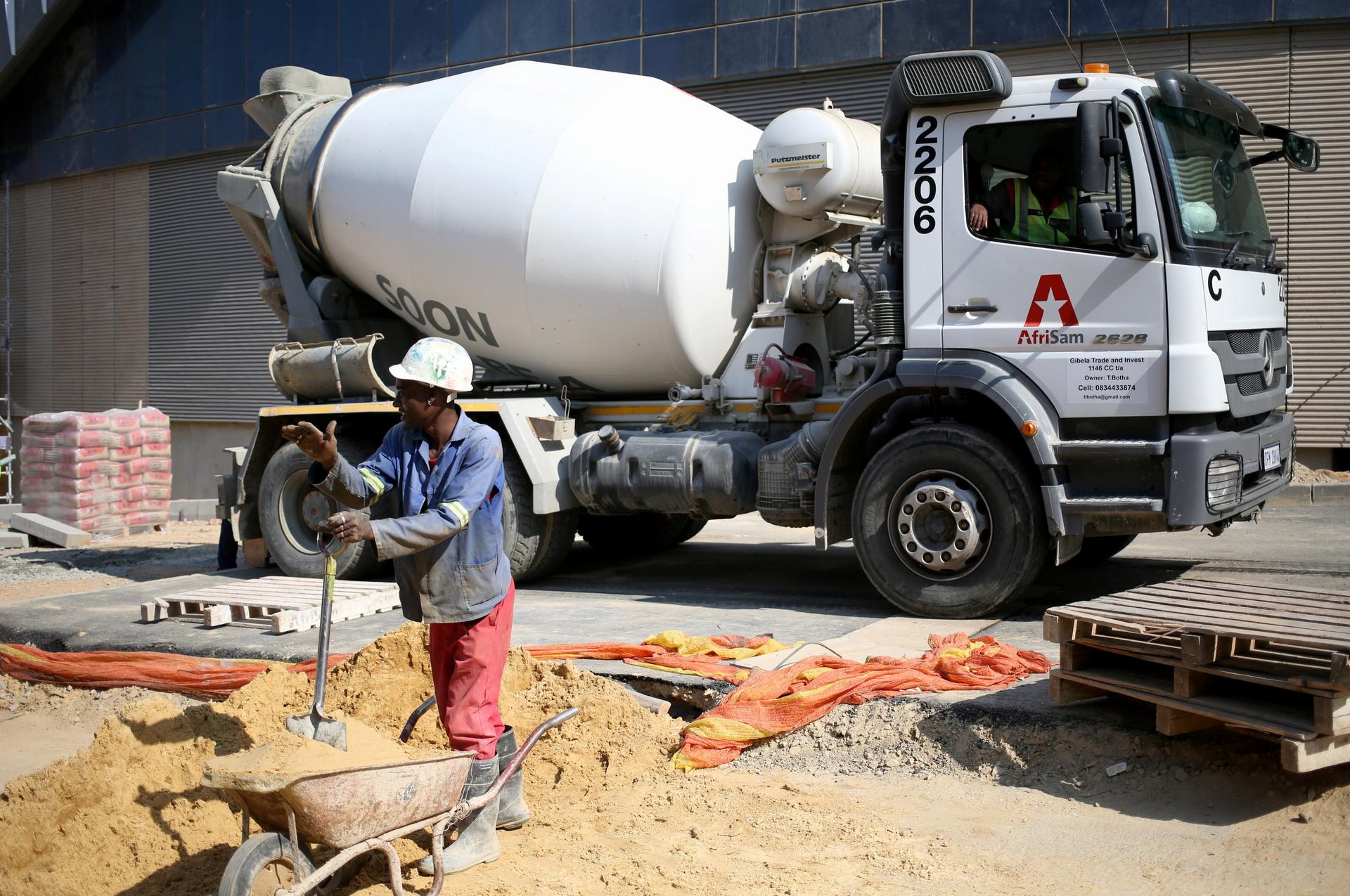Concrete production uses a ton of sand and emits a lot of carbon. Here are some greener alternatives.
A concrete mixing truck at a construction site in South Africa. Demand for concrete spurred by a global building boom is taxing sand supplies and creating massive amounts of CO2 pollution.
Concrete has built our modern world. It makes our homes, offices, sidewalks, roads and bridges. But its production also spews carbon dioxide into the air. And as developing countries urbanize, global markets for the sand used in concrete are being stressed.
Scientists around the world are developing more sustainable versions of the all-important material.
The World spoke to one of them, Susan Bernal, a materials scientist at the University of Leeds who researches more sustainable alternatives to cement.
The World: Can you give us some examples of how researchers are trying to reduce the amount of sand that concrete production uses?
Susan Bernal: The amount of sand we require in the world to produce concrete and mortar is quite high. Every year we usually need 8 billion tons, and this is causing a major environmental impact. So what we do at the University of Leeds is look for alternatives based mainly in waste derived from different industrial processes. So, for instance, we can crush different types of rocks, or crush byproducts from the production of steel. We can also use crushed glass. But we don’t have sufficient volumes for those to be a long-term strategy to reduce completely the use of natural sand.
Related: A global sand grab is wrecking ecosystems and communities around the world
The huge demand for sand isn’t the only negative environmental impact from concrete. I gather that concrete production also emits a huge amount of carbon dioxide pollution. Can you tell us how much and why that is?
The main pollutant in the production of concrete is actually the glue that keeps the components together, which is Portland cement. At the moment, the manufacturing of Portland cement accounts for 8 percent of global CO2 emissions. And because this demand for concrete is going to increase significantly in the years to come — as we tackle poverty around the world and we provide infrastructure especially in developing regions — we expect that by 2050 the CO2 emissions associated with Portland cement manufacturing will be 25 percent [of total global emissions].
You mentioned there are different versions of concrete that use less sand, replacing it with crushed glass or cast-off products from rock. Are there good alternatives to concrete that also emit less carbon dioxide?
Absolutely. There’s recently been a boom in developing new and alternative binders, where we partially or completely substitute out Portland cement, that glue that keeps the components together.
What are some of those alternatives?
When you burn coal in thermal stations, we produce a byproduct called fly ash that is highly available in many of the largest countries, including in the US. We can also use waste from agricultural processes. For instance, rice husk ashes, waste from the mining and metallurgical industries, and natural resources like volcanic ash and clay. So there are quite a lot of things we can do to utilize the large amount of waste we have [to replace some or all of the Portland cement in concrete].
Are builders actually using these alternatives?
Well, the construction industry is very conservative and to utilize these new green alternative cements, or alternative aggregates, we need to comply with a great number of standards to make sure that, for instance, if we make a house it’s sufficiently safe for people to live in it.
We hear so much about the development of electric cars and clean energy, but we don’t hear a lot about greener alternatives to concrete, and yet as you say, it’s in massively high demand around the globe. Why do you think that is? Is it just not the sexiest topic?
I think you’re right, it’s not very sexy because everyone takes it for granted. No one wonders where cement comes from or how much we consume. We just need infrastructure, we need bridges, we need housing, and we just take it for granted that they can be built. However, at the moment, with a lot of countries committing to reduce their CO2 emissions, there is a change in the culture of the construction industry and they’re starting to open up to take full advantage of these new alternatives.
Our coverage reaches millions each week, but only a small fraction of listeners contribute to sustain our program. We still need 224 more people to donate $100 or $10/monthly to unlock our $67,000 match. Will you help us get there today?
